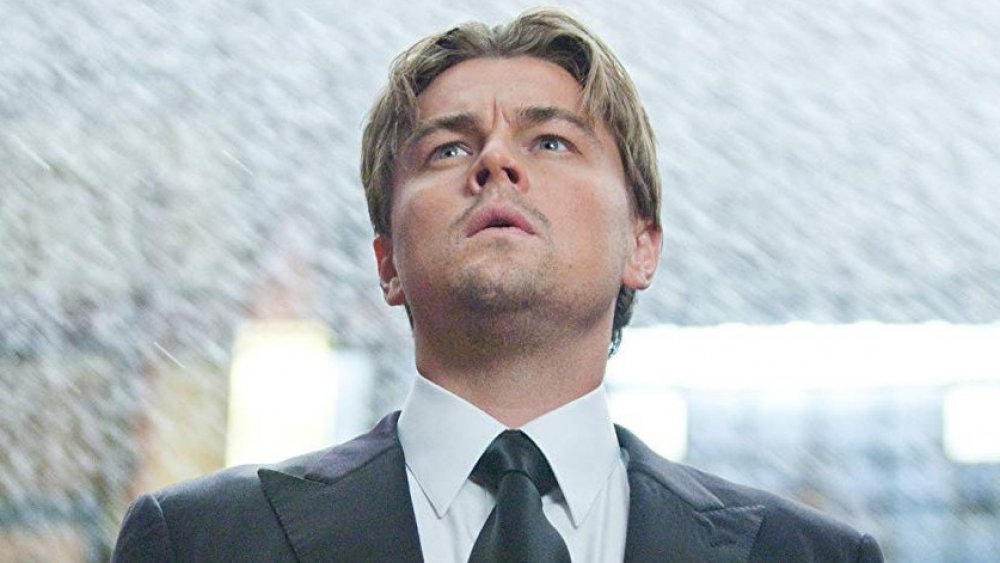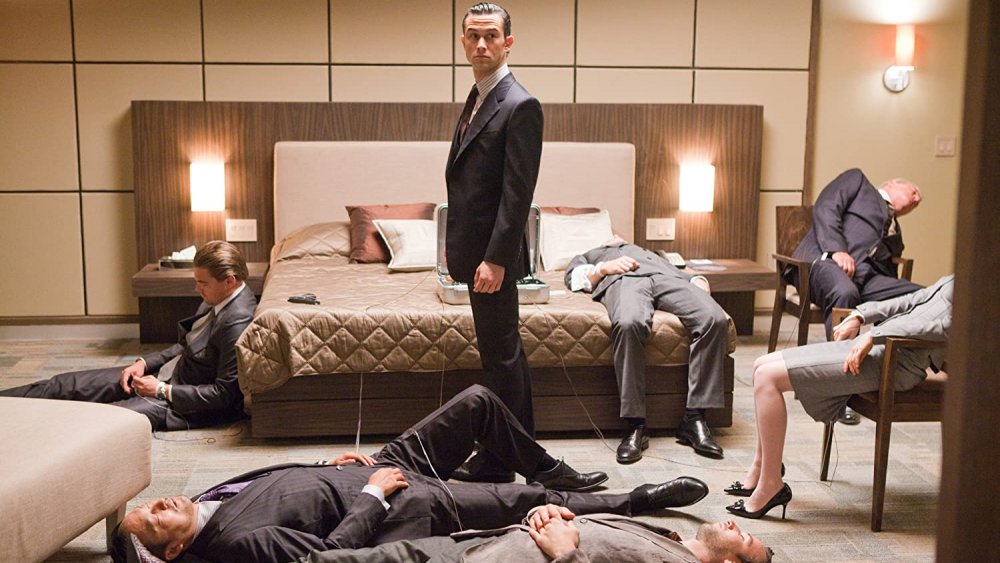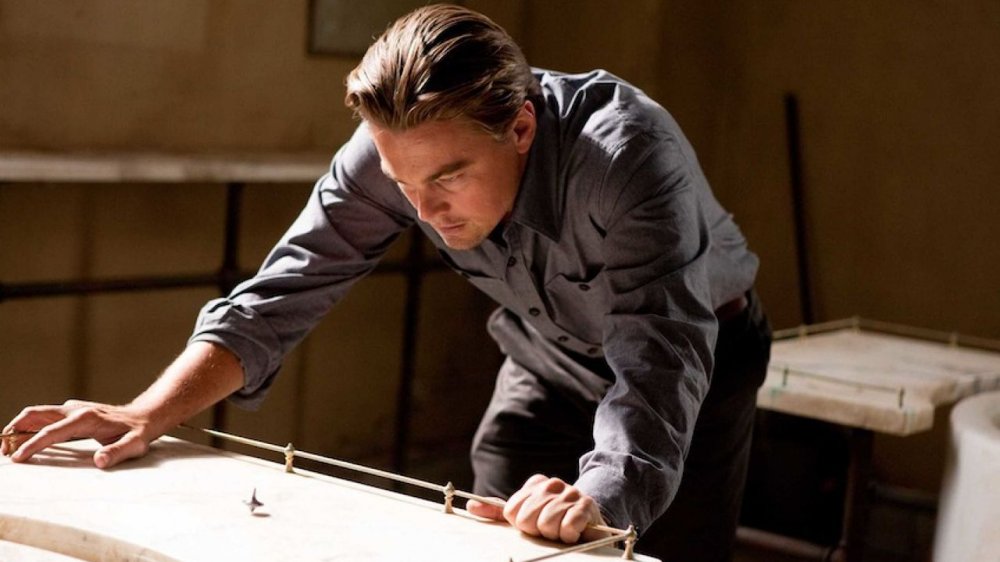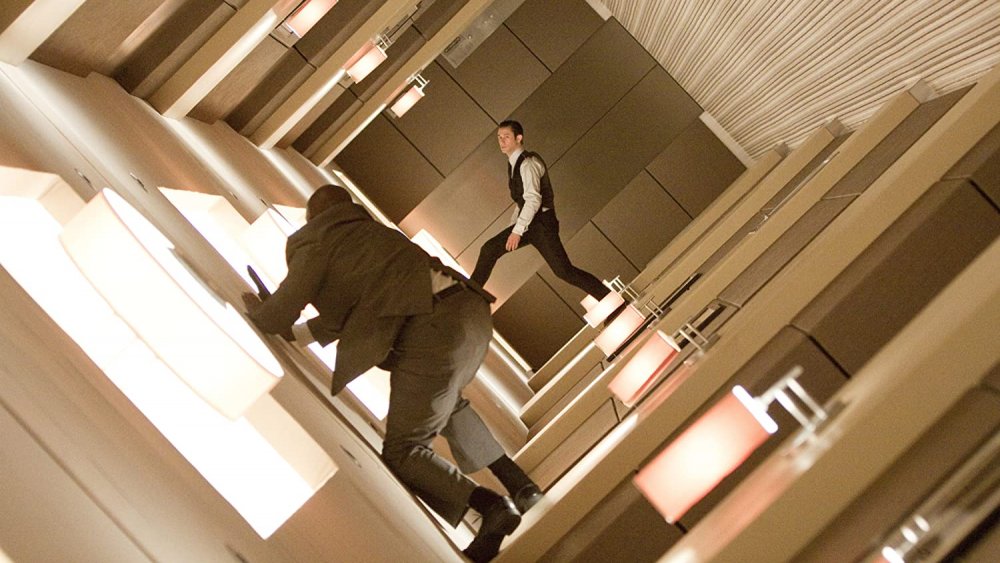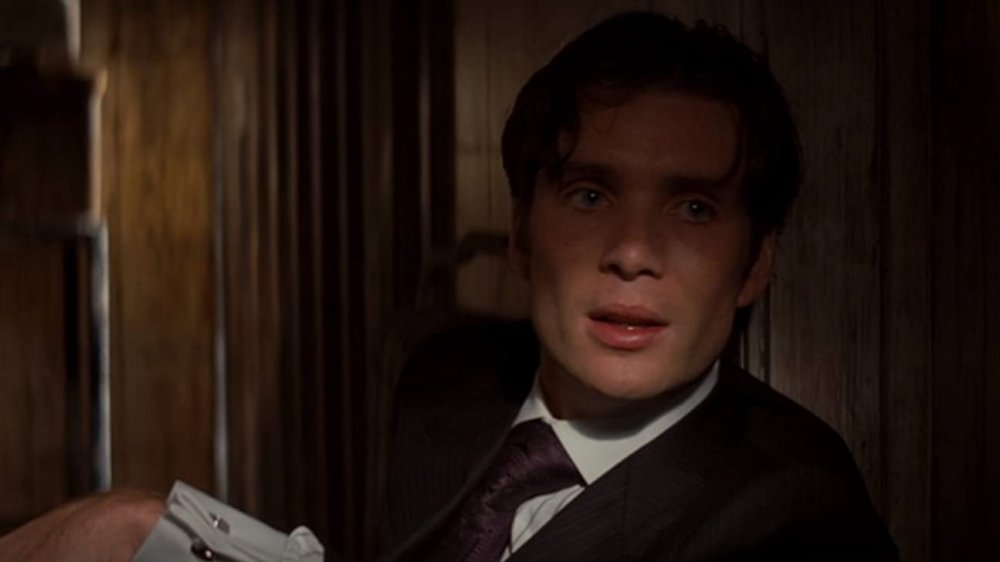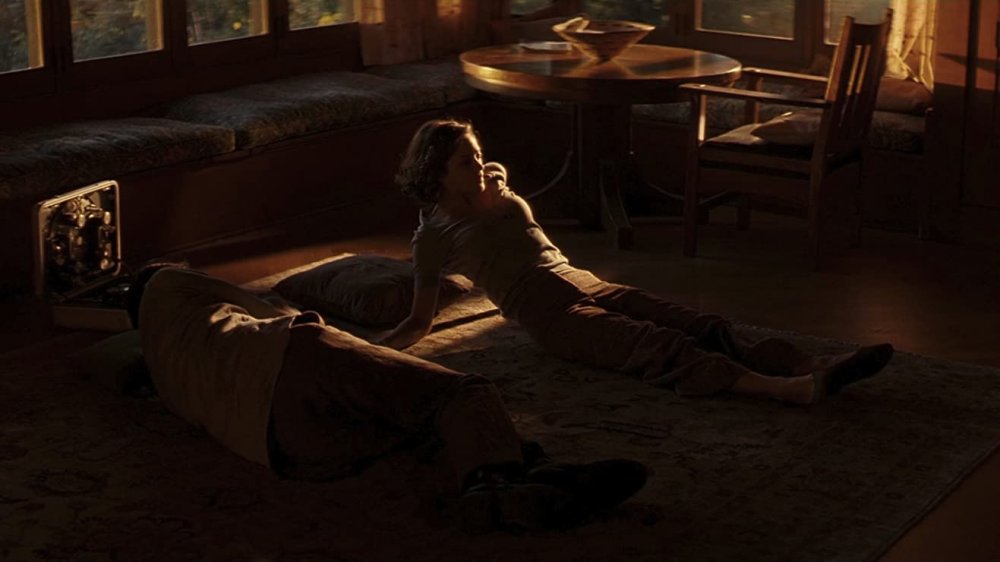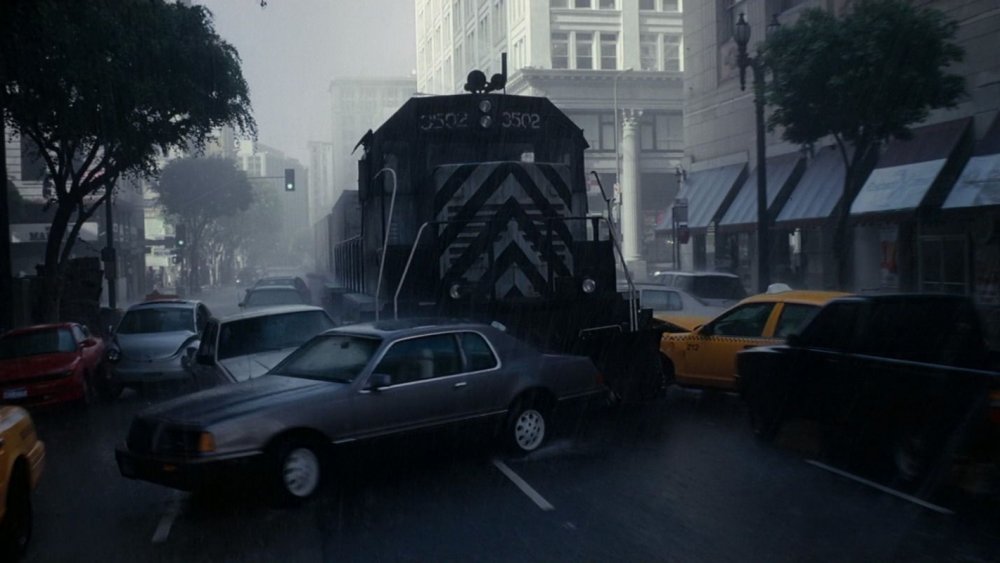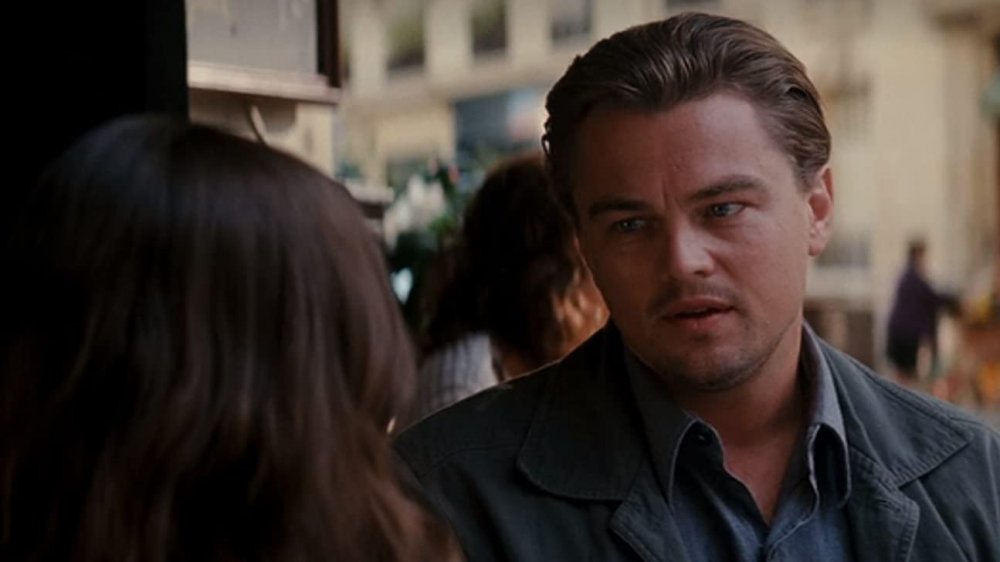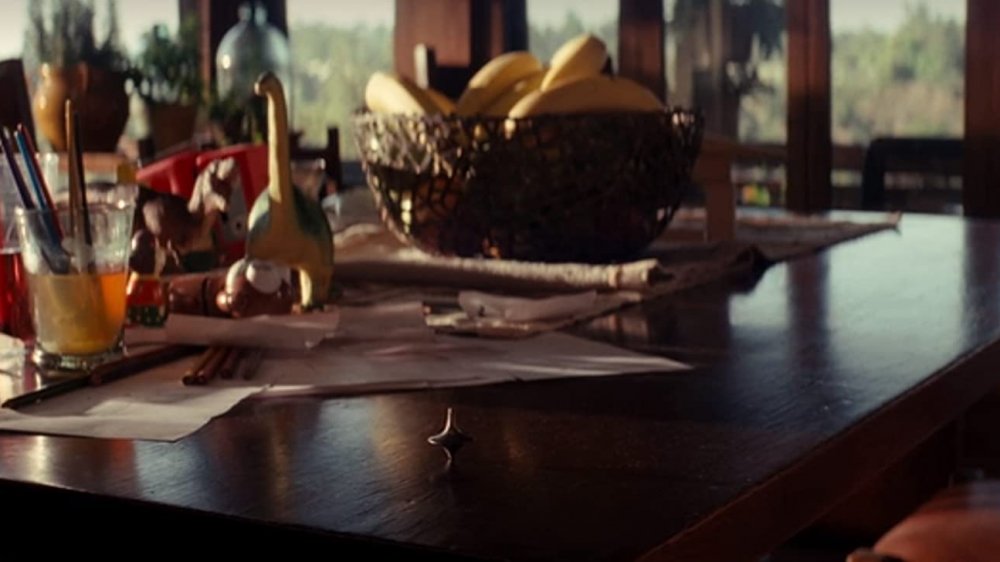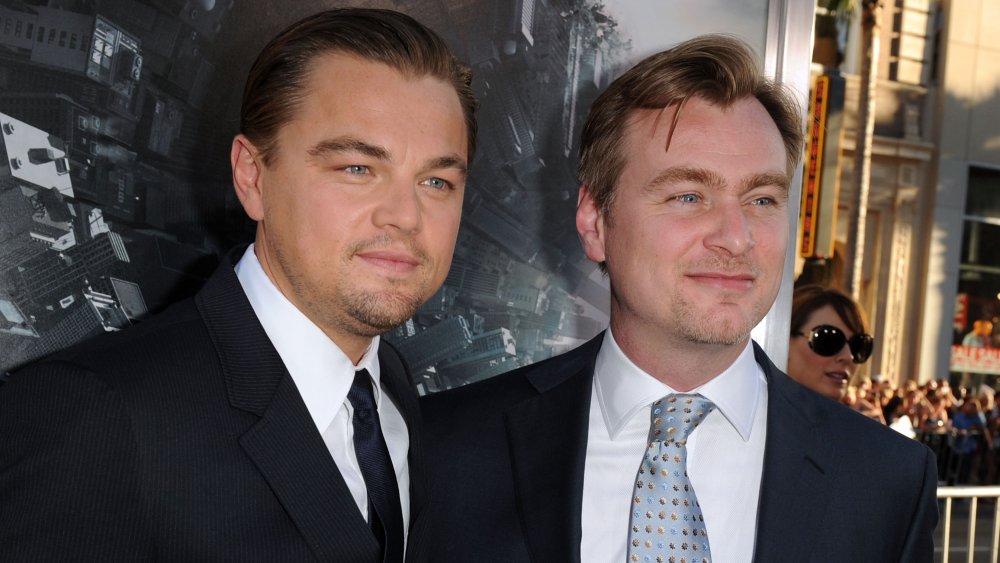The Biggest Unanswered Questions In Inception
In 2010, Christopher Nolan was one of the hottest blockbuster directors working in Hollywood. His 2008 superhero film, The Dark Knight, earned worldwide praise and a massive haul at the box office, becoming the highest-grossing comic book film to date at the time. That meant he had a lot of clout, and he could basically make any film he wanted next.
Nolan chose Inception, a high-concept, sci-fi action film about a group of people who construct elaborate dream worlds to infiltrate people's minds and steal ideas from them. Only this time, instead of taking an idea out, they have to put an idea in and not get caught while doing it.
To make the film, Nolan assembled an all-star cast led by Leonardo DiCaprio, constructed some truly breathtaking visual effects, and built an elaborate puzzle box of dreams within dreams that, in some cases, still has many viewers scratching their heads. If you've only seen Inception once, you've probably still got some questions about how it all went down, and even if you've seen it a hundred times, you're still probably puzzling over an element or two. With that in mind, here are some of the biggest unanswered questions in Inception, along with our attempts to answer them.
The rise of dream sharing
When Cobb (Leonardo DiCaprio) and his crew first recruit Ariadne (Elliot Page) to be the architect for the Fischer inception job, they have to begin to let her in on all the various rules and procedures that come with the field of dream sharing. Along the way, they mention that the process they use was first invented by the military, as a training tool that would create a more realistic simulation for soldiers. From there, the technology eventually made its way to the private sector in some form, where it's now used for criminal enterprises like extraction and inception.
But given what we know about dream sharing, it's worth asking, how widespread is the use of this technology? If high-end criminals are able to obtain and use it, and if CEOs around the world know about it as a criminal practice, then what else is dream sharing being used for? The Inception prequel comic, The Big Under, sheds a little more light on the idea of dream sharing being used for entertainment purposes, but the film does not. Are people paying big money to have others design elaborate sex dreams for them? Are they searching the minds of their partners to find proof of infidelity? Are rich kids stealing bank account numbers from their parents? The possibilities, it would seem, are endless.
The use of totems of Inception
In the world of Inception, it's established that people who frequently share dreams sometimes struggle with the nature of reality, particularly if they've experienced the ultimate and difficult to escape state known as limbo. Experienced dream sharers sometimes lose the ability to dream when sleeping naturally, and some also have difficulty determining if they're awake or still in someone's dream. To combat this, Cobb, Arthur (Joseph Gordon-Levitt), and their crew all have totems, objects unique to them that allow them to perceive reality in a clear and focused way. Arthur's totem, for example, is a loaded die that only he knows the exact balance off, while Cobb's is a small top — taken from his wife, Mal (Marion Cotillard) — that will stop spinning and topple over if he's in the real world.
The totems are, as Ariadne remarks, an elegant way to keep each dream-sharing person grounded in their own reality, and it's easy to see why this practice was adopted. What the film doesn't establish, though, is exactly when it became clear that totems were necessary. The film leaps right into its action-heavy heist plot without giving us too much backstory on dream-sharing tech, so who realized totems were essential? Well, consider the opening sequence, when Saito (Ken Watanabe) realizes that the carpet he's lying on isn't as stained as the real one in the actual world. That carpet becomes an accidental totem for Saito to realize he's dreaming, and it's very likely that's how the first totems came to be.
How much layering is possible in Inception?
At the beginning of the film, Arthur and Cobb are pulling an extraction job on Saito, who ultimately hires them to conduct the inception job on Robert Fischer (Cillian Murphy). The Saito job is a "dream within a dream" extraction, and it's implied that doubling up on dream worlds like that is both difficult and at least somewhat rare within the world of dream sharing. For the Fischer job, Cobb decides the crew needs to go even deeper to really dig into Fischer's subconscious, and he asks for three dream levels. To achieve this, the crew turns to Yusuf (Dileep Rao), who uses powerful drugs to keep the dreamers under for the duration of the job. There's a catch, though. When you're under that deep, you don't wake up when you die. You descend into limbo.
Cobb and his crew spend the rest of the film navigating the difficulties of this triple-dream world, and it proves challenging for all of them. But it also raises an interesting question. How many layers could you conceivably build into a dream? The way the film is structured suggests the idea of limbo as a kind of bottom for the characters, but how much dream space could exist between a third level and that? Could you make a dream with four tiers or five or six? If three layers isn't enough to coax inception with a strong subconscious, could you go further? Cobb's not going to try anytime soon, but it's interesting to think about.
What's up with that combination?
In the first level of the Fischer inception job, Cobb demands that Fischer give him the six-digit combination to a safe. When Fischer claims he doesn't know it, Cobb demands the first six numbers that pop into Fischer's head, and Fischer responds with 528491. By the end of the film, those numbers have popped up over and over again throughout the layers of the dream, and they ultimately do open the safe in the third level, which contains the will that convinces Fischer to break up his father's companies, thus completing the inception.
So, why does a combination of seemingly random numbers work? Because Fischer himself dreamed them up. As Cobb explains in the beginning of the film, nothing is more infectious than an idea, but true inception is only achieved when the idea you're trying to plant in someone's mind truly feels like their own. Cobb's team took Fischer's six random digits, which came from his own mind, and interspersed them through the rest of the dream to the point that, when the time came to open the safe, they worked because Fischer believed they worked. It wasn't about the numbers. It was about convincing Fischer that he wanted to access the safe.
The limbo dilemma
Cobb spends much of the film trying to avoid talking about his past. In fact, he holds so much back that his subconscious keeps manifesting his regrets throughout the Fischer job, to the point that Ariadne forces him to confess. It's then that Cobb reveals that he and his wife, Mal, once accidentally fell into limbo and spent decades there, building another world from which Mal never wanted to escape. Cobb was eventually able to convince her to leave by withdrawing her totem and using it to prove they were dreaming. The pair committed suicide in limbo, but when they woke up, Mal became convinced that the real world was a dream and committed suicide in an effort to leave it, all thanks to Cobbs' inception.
The film establishes that limbo is difficult to escape because it's hard for your mind to realize you're there, but if you do want to escape, you can do so by dying. Cobb clearly figured this out before Mal did, so why didn't he just kill her in limbo, then kill himself so they could wake up together?
Well, setting aside the implications that killing her might have if Mal ever remembered it, the key for Cobb wasn't to simply pull Mal out of limbo. It was to convince her that she wanted to leave, which he did through inception, planting the idea that she should seek out her totem again. Though his plan only worked initially and failed later, the point was to make her want to leave.
Waiting for a train
In the Fischer inception job, the first level of the dream is a relatively simple rainy cityscape. Within that dream world, Cobb and his crew have to abduct Fischer as he's catching a taxi, then take him to a warehouse and begin the process of inception. They're interrupted in this endeavor by armed men, who are projections of Fischer's subconscious trying to fight them off. Of course, Cobb and company are counting on that. What they didn't count on was a train suddenly crashing through traffic and disrupting their efforts.
So, why does the train pop up? Well, it's the same train that Mal and Cobb used to kill themselves while in limbo, to take themselves up and out of their dream state. And in the cityscape, it basically leaps out of Cobb's subconscious and into the dream because his guilt is so invasive that it can get in the way even when he's not the dreamer or the subject. But why is it the train and not Mal? Possibly because he knew Mal was the more prominent subconscious threat and was doing his best to fight her. The train, the symbol of the moment he pulled Mal out of limbo and thus doomed her, was something he wasn't necessarily counting on.
How long has Cobb been gone?
In the beginning of Inception, Cobb is working overseas, and we slowly learn that it's not by choice. He's taken up a life of constant moving, doing extraction jobs whenever he can, because he's a fugitive in the United States where he's being blamed for the death of his wife. He sometimes calls his children on the phone, and he even chances a trip to Paris to pass along gifts for them via his father (Michael Caine), but he can't go back home until he finds a way to "buy" his way back. He takes the inception job because Saito offers him freedom after nothing but a phone call.
What the film doesn't really elaborate on is exactly how long Cobb has been living this version of his life. It ultimately doesn't matter much to the story because the main thrust of the plot is in the inception job, but his past is particularly important in the context of the ending. In the final scene, Cobb finally sees his kids again, and they appear to be virtually unchanged from his last memory of them. So, has he only been gone for a few months, or has he simply lost his grip on reality?
Inception's infamous ending
If there's a reigning king of unanswered questions hanging over the mystery-laden Inception, it's this: What exactly is going on in the final scene?
By the end of the film, Cobb has just barely completed the Fischer inception job, and he pulled Saito out of limbo while he was at it. When he wakes up on the plane, Saito makes good on his promise and puts in a call on Cobb's behalf. Cobb goes through customs in Los Angeles, goes home to see his kids, and finally gets to see their faces again while his totem spins on the kitchen table. Cobb leaves the top spinning before he can see if it falls or not, and the film cuts to black before the viewer can get a definitive answer.
So, was Cobb still dreaming? There are some fans who would definitely argue that he was, as evidenced by the lack of aging in his children and the possibility that he and Mal didn't wake up from limbo into reality but instead into another layer of a dream that he hasn't escaped from. The more optimistic idea here, though, is not that Cobb ignores the top because he no longer cares if he's dreaming but because he no longer needs it to know what's real. The love and joy he feels for his kids in that moment is so permeating that he can't help but understand that he's not dreaming. The evidence for this? Well, for one thing, the top is definitely wobbling and on the verge of falling in those final frames.
Why the ending of Inception has never been explained
Inception was a critical and commercial success, but many fans of the film are still somewhat bedeviled by the ambiguous ending. Many different interpretations of the final scene exist online, many with compelling evidence to back up their claims, and you can certainly pick your own interpretation. In fact, that's what writer/director Christopher Nolan would like you to do because he refuses to explain the ending himself, for a very good reason.
Speaking at the Tribeca Film Festival in 2015, Nolan explained that he'd once given a very thorough explanation of the ending to his previous film Memento to an audience at a Q&A, with the caveat that it was only his interpretation and not the definitive answer. Later, his brother and fellow screenwriter, Jonathan Nolan, explained to him that "nobody hears that first bit where you say it's really up to the viewers if you then give your interpretation."
Upon thinking about it, Nolan realized his brother was right. If the filmmaker offers an answer to the ending, even if they say it's not meant to be definitive, most fans will take it to be the definitive answer. "It's the last time I ever opened my mouth," Nolan explained.
So there you have it. There's no definitive, authorial answer to the ending of Inception because Christopher Nolan really would, in this case, like you to make up your own mind.
